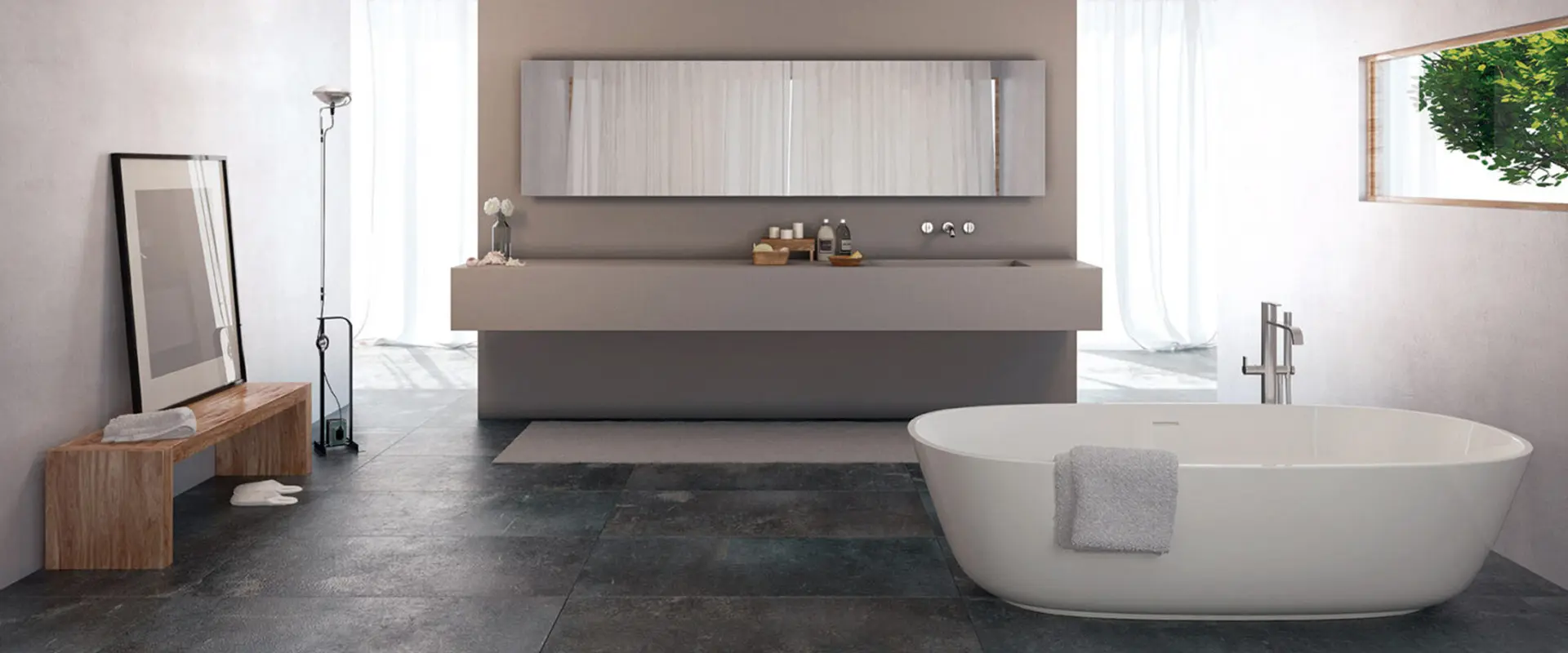GRANITE, QUARTZ OR PORCELAIN COUNTERTOP?
We have a lot of questions while selecting a product for our homes. What is the product's quality like, how much does it cost, is it simple to use, does it work with other things, etc. Such questions are tough for us to find answers to. Of course, designers need to know the answers to these questions even more. Regardless of the design of the interior or exterior, selecting a product based on the location where it will be used is a very difficult process. The question of whether quartz or porcelain should be preferred is still up for discussion.
Worktops made of porcelain are becoming more and more common and firmly established in fashion. Versatile porcelain is the easiest way to give the space a fashionable appearance. Due to its sturdy construction, porcelain has a longer lifespan than substitutes. Porcelain slabs can be used in a variety of indoor and outdoor spaces, including stairs, walls, floors, furniture, bathrooms, and exterior cladding. Porcelain surfaces are exceedingly dependable and non-porous, in contrast to the porous nature of granite and marble surfaces, making them ideal for usage in locations where frequent cleaning is necessary. Granite and marble surfaces need to be cleaned right away to prevent stains, and corrosive chemical substances should never be used on these surfaces. Porcelain, on the other hand, is chemically resistant and has a stain-resistant, non-porous surface that makes it simple to clean. Additionally, porcelain slabs are resistant to heat shocks because to the high temperature and pressure under which they are formed. These characteristics enable porcelain surfaces to be utilised for many years while maintaining their brand-new appearance. Porcelain is healthier than marble and granite surfaces for damp spaces like bathrooms. Because marble and granite are sensitive to acids, vinegar, and bleach, they deteriorate when these substances are in constant touch with their surfaces. However, due to its resistance to chemical reactions and temperature fluctuations, porcelain can be readily selected in baths and even boats.
The construction of sustainable structures is crucial. The materials used for exterior facades must contribute to thermal insulation throughout the year in order to be energy efficient. Porcelain is a weather-resistant material that may be used outside for a long time without losing its colour or texture. Additionally, it aids in the thermal insulation of the environment in which it is utilised. One of the reasons porcelain is safely favoured indoors and out is that porcelain slabs are fireproof. Contrary to the sumptuous feel experienced in the final perspective of the room, porcelain slabs are relatively cost-effective and provide pattern integrity by covering huge regions. Porcelain is a material that may be chosen to enhance the design of living spaces since it is elegant and has a high level of durability.
The world's hardest material, quartz, is used to make quartz countertops, which are a great option for various designs in interiors, exteriors, and landscapes. With its many sizes and dimensions, it not only makes application simple but also enables environmentally and aesthetically sound design. Quartz worktops for the kitchen and bathroom are a simple option because they don't require sealing (polishing) like granite and marble do. Quartz slabs are advantageous in terms of cost as well, though. They have anti-scratch qualities and their hues do not fade with wear like those of comparable materials.
Quartz and porcelain countertops are constructed using the most recent scientific advancements, are non-porous in structure, and require less upkeep than worktops made of other materials. With its manufacturing techniques, they may be utilised on walls, floors, kitchen and bathroom counters, and other surfaces in a variety of colours and patterns that go with any style, from concrete to wood to marble to natural stone. By providing both practicality and aesthetic appeal with the variety of their collections, quartz and porcelain slabs push the boundaries of innovation.
 Interior Architect Elif Demir | elf.demiirr
Interior Architect Elif Demir | elf.demiirr
Share


